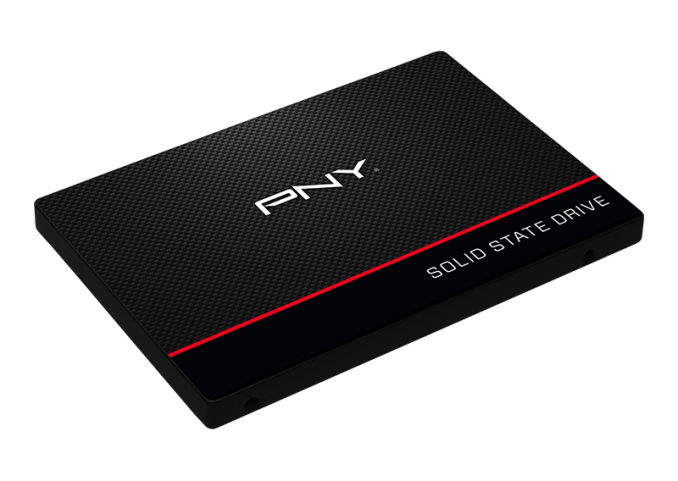The PNY CS1311 and CS2211 SSD Review: MLC vs TLC at 15nm
by Billy Tallis on April 15, 2016 8:00 AM ESTFinal Words
The Phison S10 controller and SSD platform debuted in late 2014, and it is more popular than ever. PNY's CS1311 and CS2211 drives show us how the platform has evolved and what we can roughly expect from this year's S10 drives that use the latest firmware and 15nm NAND. With an entry-level model and a higher-performance mainstream SSD, PNY's latest drives cover the highest-volume segments of the SSD market.
The PNY CS1311, for the most part, squeezes in between two other 15/16nm TLC drives we've tested recently: ADATA's Premier SP550 and OCZ's Trion 150. This goes for both performance and price: the Trion 150 is the highest-performing and most expensive of the three, while the SP550 is slightly cheaper than the CS1311 but they trade places in many benchmarks. The CS1311 has generally better write speeds, which are the SP550's most acute weakness, but the SP550's steady-state write speed is significantly better.
The comparison of the CS1311 against the OCZ Trion 150 is particularly interesting. They both use nominally the same flash (Toshiba 15nm TLC) and the Toshiba TC58 controller on the Trion 150 is clearly a close relative of the Phison S10-X, but the Trion 150 is consistently more power efficient and matches or exceeds the performance of the CS1311 on almost every test. It's clear that there's something custom about the Trion 150 that sets it apart from the rest of the Phison S10 crowd, but it's not clear whether it is differences in the controller silicon or firmware or NAND selection.
Being positioned in the middle of the market, the MLC-based CS2211 has a lot more potential competitors and pricing isn't quite the overriding factor that it is for the entry-level TLC drives. Our test data doesn't have full coverage of the 2.5" versions of the Samsung 850 EVO or the latest firmware revision of the Crucial MX200, but we can still make some important conclusions about how they stack up. At 480GB, the CS2211 is a toss-up against the 500GB MX200. Their prices currently match and they perform very similarly overall. With fixes to its SLC caching the 250GB MX200 is probably a slightly better overall performer than the 240GB CS2211, and at the moment the MX200 is also a few dollars cheaper. The Samsung 850 EVO uses the same controller architecture as the 850 Pro and on most tests is one of the two or three fastest SATA drives in its capacity class. For only a few dollars more, it's a reasonable to pick the 250GB 850 EVO over the 240GB CS2211. The pricing gap is quit a bit bigger at 480GB/500GB, and it might not be worth the premium.
| SSD Price Comparison | |||
| Drive | 480GB/500GB | 240GB/250GB | 120GB |
| ADATA SP550 | $107.99 | $57.99 | $37.99 |
| PNY CS1311 | $109.99 | $59.99 | $39.99 |
| OCZ Trion 150 | $129.99 | $61.99 | $45.99 |
| SanDisk Ultra II | $129.99 | $74.99 | $54.79 |
| Crucial MX200 | $139.00 | $81.72 | |
| PNY CS2211 | $134.96 | $84.96 | |
| Samsung 850 EVO | $149.99 | $88.00 | |
The MLC vs TLC comparison between the PNY drives reveals some interesting patterns. First, the garbage collection routines are very different, as shown by the performance consistency tests. The TLC drive has what seems to be the newer and much more consistent behavior while the MLC drive is widely variable. But for all of that, the MLC drive steady-state average is better. And while it's true that TLC flash generally consumes more power (especially for write operations), the TLC drives did not draw significantly more power than the MLC drives of the same capacity. The MLC drives just get a lot more work done with the same amount of energy.
The new cut-down S10C controller used in the 120GB and 240GB models do not seem to have brought any new performance limitations relative to the full-size S10-X used in the 480GB models and all previous Phison S10 drives we've tested. It's a cost-cutting measure that is quite welcome, especially since it will reduce the incentive for entry-level models to adopt Phison's single-core DRAM-less S11 controller.











43 Comments
View All Comments